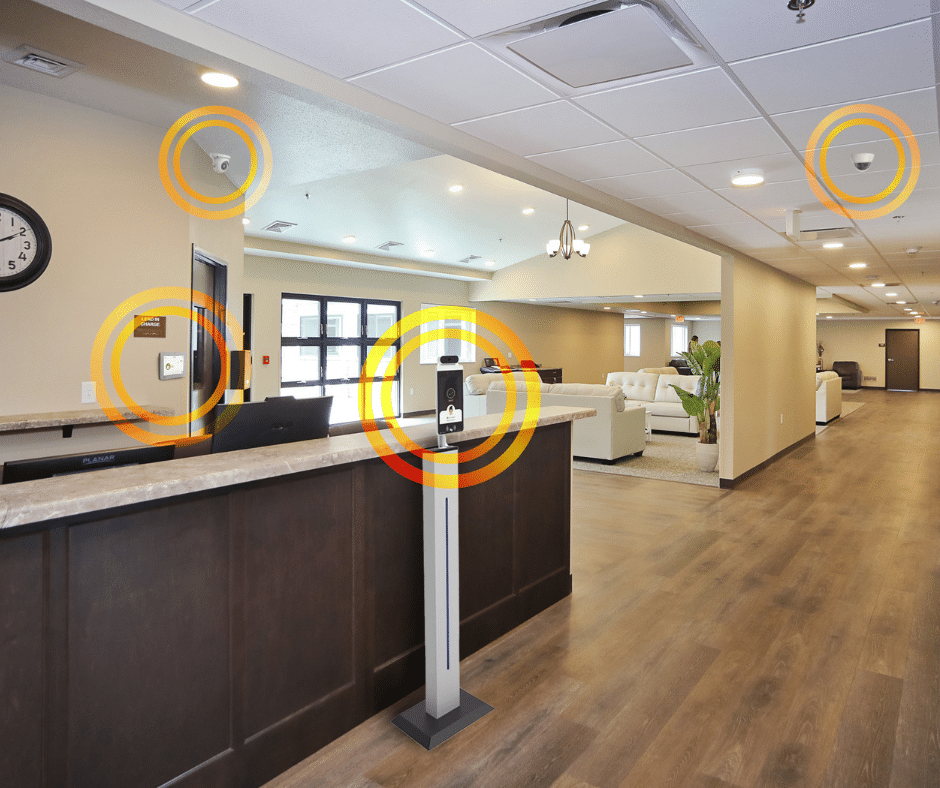
New assistive tech means opportunity for senior living operators
Report: seniors use and value assistive tech now more than ever
According to a U.S. News & World Report survey, assistive technologies are increasingly becoming a part of daily life for seniors, who are leveraging these technologies to help them age in place. This is good news for senior living operators on several levels and underscores the value of incorporating these technologies into your existing or future senior housing developments, making them more adaptable to changing needs and better able to retain current and future residents.
Increasing use of health and assistive tech for senior living among those 55/65+
According to the survey, the vast majority of respondents said that aging in place was an important goal for them. That percentage increased from 93% in 2023 to 95% in 2024, according to the survey.
But aging in place doesn’t strictly apply to single-family homes. It also applies to multifamily housing, active adult, and independent living. As the over-65 population swells with aging baby boomers and Gen X not far behind, integrating assistive tech capabilities into your senior housing design and construction will boost its appeal and retention rates, allowing residents to stay where they are, even as they age into higher levels of need.
Understanding why and how aging adults use assistive technology for senior living
Seniors say the ability to age in place can be enhanced due to several new health tech products or assistive technologies, according to the study, including medical/health mobile apps, health tracking tech or wearable medical trackers, smart facility technologies, hearing assistance tools, and medical alert devices. Here are some more important data points that emerged in the report.
- About half of the survey respondents (49%) said general aging was their main reason for incorporating technologies like these into their daily lives.
- Mobility impairments were cited by 28% as the secondary reason for using the tech to deal with health challenges like arthritis or fibromyalgia.
- Hearing impairments were the third-most common reason respondents reported for using assistive technologies (22%).
- Just 47% of respondents said they did not use assistive or health-related tech, with the majority of them, 70%, saying they felt the technologies weren’t yet necessary for them.
Additionally, more adults age 65 and over are using the internet, with 75% online versus just 19% in 2000. And three in four people in this age group (76%) now own and use smartphones, according to the Pew Research Center.
This data is of great interest to investors, developers and owners in the senior living community space, who can use it to gain insights into current or incoming residents’ technological needs and preferences. For example:
- The report indicates what matters most to users of assistive and health technologies. Users report a desire for tech that is easy to use, easy to set up, accessible through a mobile app, wireless, voice-activated, and discreet in design. Senior living operators can design and build for integration of these technologies.
- In learning how to use new devices, survey respondents said they depend on product guides most often, followed by friends and family, and help from health care professionals — important to consider when adding assistive tech in a senior housing environment.
- Also noteworthy is that 96% of seniors who use a medical alert system reported it gives them relief or assurance, according to a Senior Safety and Connectedness Survey by U.S. News & World Report. Similarly, 97% of users’ children said the medical alert system used by their mother or father gives them peace of mind. This indicates that senior living community tenants and their families would likely place a high value on medical alert systems as well.
Incorporating assistive technology and health-related tech in your senior housing
Overall, survey respondents said assistive and health-related tech improved their quality of life (88%) and that it gave them a sense of independence (55%), safety (44%) and improved health (33%) when using the technologies. For senior living developers and investors, the messaging is clear: embracing assistive and health technology can be a strategy for attracting and retaining tenants and empowering them to age in place when they hang their hats in your senior living community.
Building or remodeling to incorporate the latest and best technologies that your residents want and need can be easily optimized with the help of the design and build construction model. When you’re ready to meet the demand for emerging technology from today’s seniors, our design and build professionals can help. Contact us to discuss your vision to build new or reimagine the future of senior living in La Crosse, WI, Rochester, MN, and beyond.